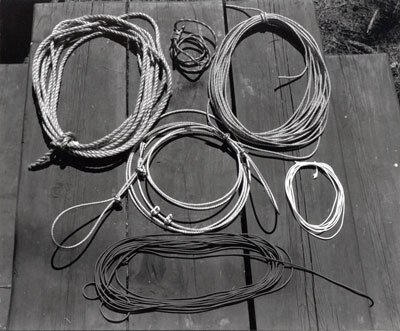eat_those_lemons
New Member
Hello! I am totally new to Control booth, one of my colleagues used to be on here on the time so I figured you guys would be a good resource to ask.
I was one of two people who did lights and sound for the high school that I went to (was k -12 so ended up being a technician for 5 years)
The other guy that I worked with was very particular about doing things correctly, ie to code, being safe, O designing sets and such with ample safety factors etc.
When he was training me he took a lot of time to teach me to over and under all of the cables and then to tie them off with some string (we used some paracord pieces)
I have since moved on but I am still occasionally called and asked if I can help by the person in charge of the control booth. When I was helping today one of the people who they had hired or was a volunteer (a parent I believe not sure) to help with the technical part of the theater was winding cables by just twisting them till they looped and then tieing them in knots instead of using the string.
I then was very confused and was asking him about it and said that I did not agree with that method since I thought it put to much strain on the cable, he got very angry and said "As long as you don't kink the cable it is fine and you need to respect your elders!" (I'm in my early 20's and he is probably late 30's) He then talked about how he 'works for an audio company so he knows what he is doing.
How should I respond to that? Based on what I was taught by my co-worker (who doesn't work there either anymore) You should always over and under and definitely not tie knots with the cable to hold it together. Should I just let it go? Is he actually correct?
TL;DR: Asked sometimes to go back and help my old high school with tech stuff for plays a new person who I assume is a parent was winding cables by twisting them till the looped and then held it all together by using the end of the cable to tie a knot
When I was questioning why he was doing that and that that is not how I was taught he got super angry.
-How should I respond to that? Should I just let it be? Was he actually correct?
Thanks guys!
(I attached the best picture I could find that gave an example of how the cables were being tied up, it is close to how he was doing it just not quite as tight as these ropes)
I was one of two people who did lights and sound for the high school that I went to (was k -12 so ended up being a technician for 5 years)
The other guy that I worked with was very particular about doing things correctly, ie to code, being safe, O designing sets and such with ample safety factors etc.
When he was training me he took a lot of time to teach me to over and under all of the cables and then to tie them off with some string (we used some paracord pieces)
I have since moved on but I am still occasionally called and asked if I can help by the person in charge of the control booth. When I was helping today one of the people who they had hired or was a volunteer (a parent I believe not sure) to help with the technical part of the theater was winding cables by just twisting them till they looped and then tieing them in knots instead of using the string.
I then was very confused and was asking him about it and said that I did not agree with that method since I thought it put to much strain on the cable, he got very angry and said "As long as you don't kink the cable it is fine and you need to respect your elders!" (I'm in my early 20's and he is probably late 30's) He then talked about how he 'works for an audio company so he knows what he is doing.
How should I respond to that? Based on what I was taught by my co-worker (who doesn't work there either anymore) You should always over and under and definitely not tie knots with the cable to hold it together. Should I just let it go? Is he actually correct?
TL;DR: Asked sometimes to go back and help my old high school with tech stuff for plays a new person who I assume is a parent was winding cables by twisting them till the looped and then held it all together by using the end of the cable to tie a knot
When I was questioning why he was doing that and that that is not how I was taught he got super angry.
-How should I respond to that? Should I just let it be? Was he actually correct?
Thanks guys!
(I attached the best picture I could find that gave an example of how the cables were being tied up, it is close to how he was doing it just not quite as tight as these ropes)




